What Is the Controversy Between Hanfu and Hanbok?

Some people might think that Hanbok and the Ming dynasty clothing look quite similar—and it’s not uncommon to see people online assume they’re basically the same thing. Honestly, this kind of confusion is understandable.
Not long ago, a content creator wore Ming dynasty clothing for a Vogue photoshoot, and the photos were later shared on Vogue’s official Instagram account, which has over 36 million followers. Shortly after, some Korean netizens began claiming that she was wearing Hanbok instead. The situation escalated to the point where Korean media outlets covered the story, and even a Korean professor reportedly filed a complaint to Vogue, accusing them of distorting history. 💔
As part of the Silkdivas team, which aims to share more about Chinese dresses culture, we felt it was time to clarify things in this blog post—let’s break it all down properly.
Ⅰ. Why Do Hanfu and Hanbok Look Similar?
During the Ming Dynasty, Korea (then a vassal state of China) was heavily influenced by Chinese culture, especially in clothing. It was common for the Ming emperors to gift official robes to the Korean royal court, allowing them to wear attire that mirrored that of the Chinese nobility. Historical records, such as the Samguk Sagi, mention that in the third year of Queen Jindeok’s reign, Korean nobles began wearing Chinese-style Ming dynasty clothing.
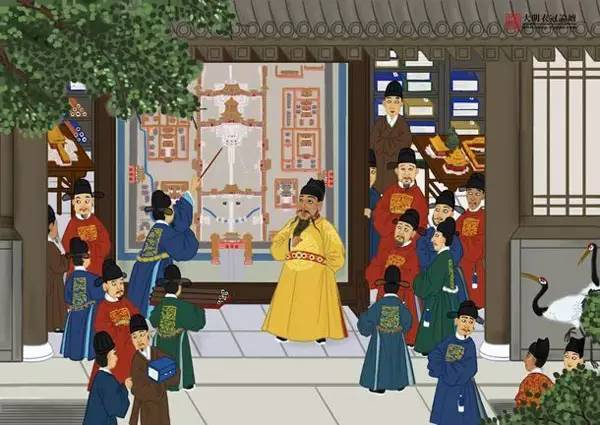
Because Korea was a tributary state, there were also rules—such as ensuring that local clothing was never more elaborate than that of the Chinese court. Over time, Korea adapted these gifted styles and blended them with its own cultural aesthetics. That’s why traditional Korean hanbok and Ming dynasty clothing share some visual similarities.
Even today, some ethnic Koreans in China (like the Joseonjok) still preserve these early design influences. For Korean royals and officials, receiving garments from the “upper country” (China) wasn’t just about fashion—it was a mark of honor, status, and cultural refinement. This long-standing connection explains the overlap between the two traditional styles.
Ⅱ. The Evolution of Hanbok from Hanfu
In the early Joseon Dynasty, the official and everyday attire of Korean kings and government officials closely resembled that of the Ming dynasty clothing—sometimes almost identical. For example, in Ming official attire, red indicated the highest rank, blue was for mid-level officials, and green signified lower ranks.
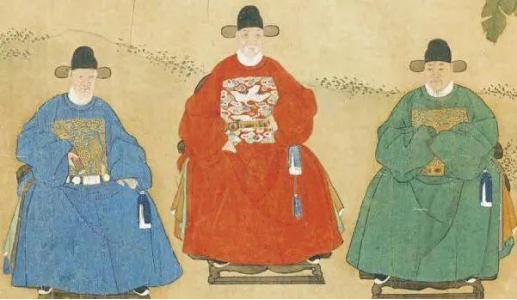
When the Manchu took over China during the Qing Dynasty, they enforced strict rules on the Han Chinese, requiring them to shave their heads and adopt Manchu-style clothing—such as the queue hairstyle, narrow-sleeved robes, and official hats with feather ornaments. However, these rules were not imposed on Korea. As a result, Korean court attire during the later Joseon period still retained many styles from Ming dynasty clothing.
Over time, without the Ming dynasty as a direct reference, Korean official dress began to evolve on its own, also absorbing subtle influences from Qing clothing. The designs became less grand: official hats changed shape and size, robes grew shorter with narrower sleeves, waistlines rose higher, and the square rank badges (known as buzi“补子”) became smaller.
In portraits of late Joseon officials, you can see these changes clearly. While the basic structure of the clothing remained, it lost much of the wide, flowing elegance of earlier Ming-influenced styles and became more restrained and simplified.
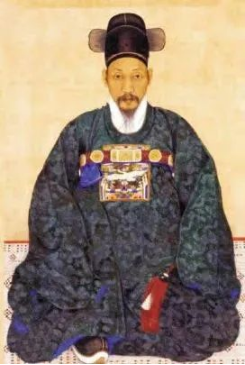
Ⅲ. The Difference Between Hanfu and Hanbok
1. Top Garments:
In Ming dynasty clothing, the upper garment comes in a variety of sleeve types—such as wide sleeves, narrow sleeves, or the elegantly curved “pipa sleeves.” This variety gives Hanfu a rich and diverse appearance. In contrast, the top in Korean hanbok usually features straight or narrow sleeves, with less variation in style.
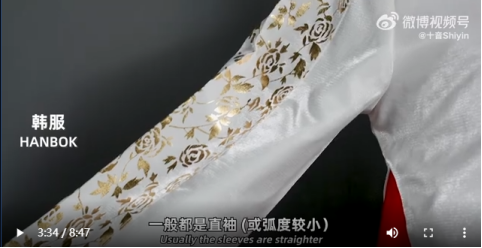
2. Skirts:
Hanbok skirts are worn high, starting from the chest, which is somewhat similar to the chest-high skirts seen in Tang dynasty Hanfu. These skirts are typically one-piece wraparounds and often secured with shoulder straps in modern versions for a better fit.
On the other hand, the horse-face skirt in Ming dynasty outfit is worn at the waist. You won’t usually see it worn chest-high—unless someone is going for a creative look. Horse-face skirts are also known for their neat, structured pleats, giving them a clean and refined silhouette. In comparison, hanbok skirts tend to have softer, less defined folds.
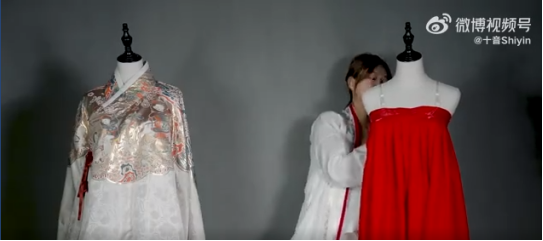
3. How They’re Worn:
The way these garments are worn also differs. Ming dynasty clothing tends to emphasize symmetry and structure, especially in its pleated skirts, while hanbok focuses more on flow and volume, creating a gentle and rounded silhouette.
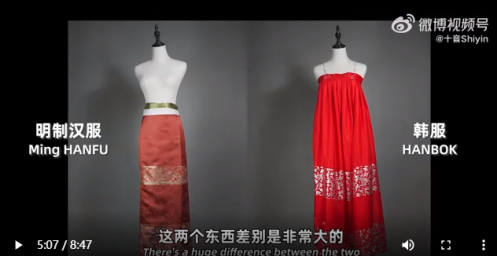
4. Collar Differences:
Both Hanbok and Hanfushare a common feature: they use a crossed-collar design that folds to the right. However, the placement of the collar and ties is quite different. In Hanbok, the collar typically ends around the chest, and the ribbons are tied at the center of the chest. In contrast, Ming dynasty Hanfu jackets have ties positioned under the right armpit, making the fastening point lower and more to the side.
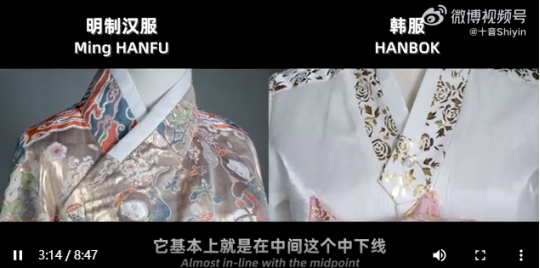
5. Side Slits:
Another difference lies in the side slits. Both Hanbok and Hanfu have slits under the arms, but their position and shape vary. Hanfu slits are lower—around the waist—and are quite subtle, often not revealing the inner layers. Hanbok slits, on the other hand, are higher, right under the armpit, and shaped like a noticeable “U”, making the inner clothing more visible.
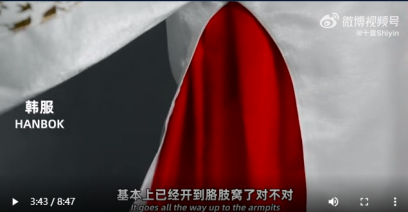
6. Craftsmanship:
When it comes to craftsmanship, the two also differ significantly. Hanfu is often made using refined traditional techniques such as brocade with embossed patterns (妆花) or gold weaving (织金), which give it a very detailed and luxurious look. Hanbok, due to historical and technical limitations, generally doesn’t use such intricate methods. Instead, you’ll often see simpler techniques like gold stamping, which gives a decorative look but isn’t as delicate or elaborate as Hanfu’s craftsmanship.

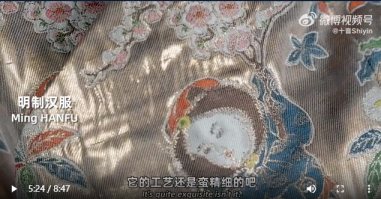
Summary
Hope everyone can gain a deeper understanding of both Hanfu and Hanbok. Did you know that the traditional Korean top is also called “Tang Yi,” which literally means “Tang clothing”~ That name alone might remind you of China’s Tang Dynasty. Instead of avoiding the connection, it would be more respectful and honest to acknowledge the historical ties between Hanbok and Hanfu—there’s really no need to hide it or try to claim these designs as entirely their own. 😔
If we look at fashion history, it’s clear that styles evolve through cultural exchange and mutual inspiration. Hanbok was indeed influenced by Ming dynasty clothing, while also developing its own unique features. We hope Chinese outfits continues to grow and flourish, and that the debates between Hanfu and Hanbok lovers can turn into opportunities to appreciate and co-create beautiful traditional fashion.
Have you ever had someone mistake your Hanfu for something else? Share your experience in the comments!
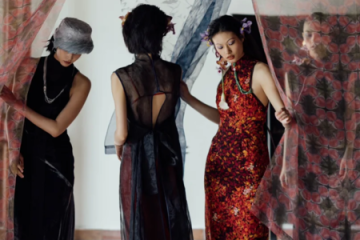
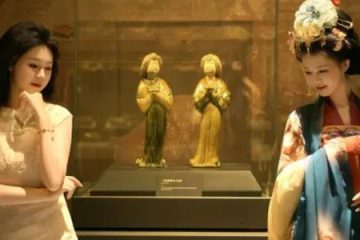

0 Comments